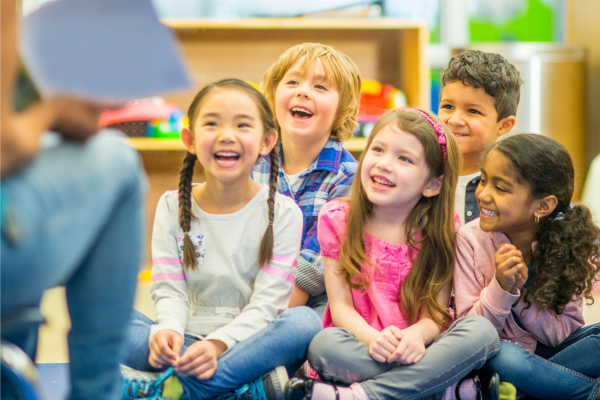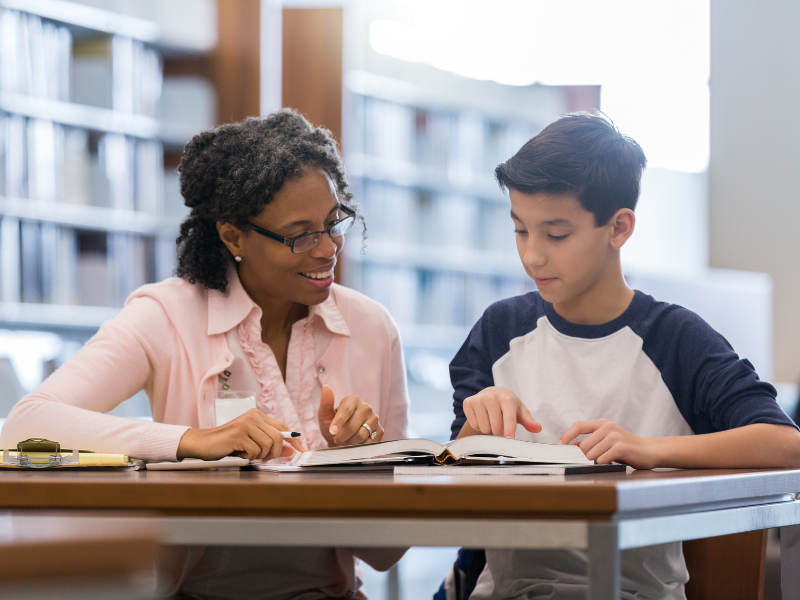Posted in: Aha! Blog > Wit & Wisdom Blog > Implementation Support > Get Organized
In this second installment of a five-part blog series, Great Minds® teacher-writer Emily Gula connects with students and teachers around the country to learn about their successes using Wit & Wisdom in their English classrooms.
Wit & Wisdom® lessons explore five Content Framing Questions. The Content Framing Questions are key questions that lead students through a series of five Content Stages: Wonder, Organize, Reveal, Distill, and Know. Each of these stages builds an important habit of mind to help students closely read complex text.

New Year’s has come and gone along with many of my resolutions. My lunch may be healthier, but the piles of paperwork have returned to my desk. In her book, The Life-Changing Magic of Tidying Up: The Japanese Art of Decluttering and Organizing, Marie Kondo explains that “tidying is just a tool, not the destination.” Viewing decluttering as one step toward a more productive workday makes tidying up seem more doable. With an organized desk, I’ll be better able to access the information I need when I need it.
Similarly, students in Wit & Wisdom classrooms across the country have learned a systematic way to clarify their thinking about a text through Organize, the second of Wit & Wisdom’s five Content Stages. Students learn strategies to categorize and comprehend critical text details, which help them gain a clearer understanding of the fundamental elements of the text. I talked with teacher Emily Deaton to find out what Organize lessons look like in her classroom.
ESTABLISHING A ROUTINE
In Emily Deaton’s first-grade classroom at Farmington Elementary, each Wit & Wisdom lesson begins with an introduction to the Content Framing Question, which signals the lesson’s focus to students. Deaton explains, “I have those questions on a ring set and I flip it every day.” Her students begin each lesson knowing “what we are going to do today.”
Deaton shares how this routine has helped her students: “It has given them more control of their own learning, because they know what they are expected to do that lesson…and are doing more of the learning themselves.” By establishing a consistent routine, students have more time and cognitive space to engage with the text. During every Organize lesson, students know they will answer the question, “What is happening in this text?”
ORGANIZING TEXT MEANING
Students need time to orient themselves to a complex text before summarizing its key supporting details and ideas. The Organize stage helps students get their bearings within a text. Rather than becoming overwhelmed by the breadth and depth of details, students learn to sort through and categorize them, boosting their literal comprehension of the text. While the activities vary by grade level and reading genre, students’ goal in the Organize stage is always to articulate what’s happening in a text—a necessary step before moving on to deeper analysis in later lessons.
Students use different strategies to determine what’s happening in a text, based on the type of material they’re reading. When studying a literary text, first-grade students often complete a Story Map, identifying the story elements such as characters and settings, as well as the problem and resolution. This type of organizing grows in sophistication along with students. For example, Wit & Wisdom third-grade students sequence the multiple generations of characters in Patricia Polacco’s The Keeping Quilt, while seventh-grade students summarize the setting, plot, conflict, and characters of The Canterbury Tales.
The Organize stage looks somewhat different for informational texts in Wit & Wisdom. While studying the Grade 1 module Creature Features, students read informational texts loaded with facts about animals’ unique features. To make these texts more manageable for a range of readers, Deaton helped students use text features such as headings to locate key information in the text. Additionally, she provided students time to work in small groups using the Jigsaw routine to “find the main idea of…certain pages and come back and teach the class those pages.” This objective functions as a formative assessment, providing data on students’ ability to summarize. Deaton knows an Organize lesson has been successful when students have “organized the text in a way where they can see the parts but also the whole.”
EXPRESSING UNDERSTANDING
The benefits of the Organize stage even extend beyond reading comprehension. It “helps immensely, especially with writing,” says Deaton. Since her students were already familiar with a Story Map, they used it as a tool to “start on their writing and planning process” when they wrote original narratives about a character whose life was changed because of books. Examining how a professional author organized a narrative allowed students to apply that knowledge to their own writing.
Deaton observed how students’ organizing skills support their informative writing as well. Because students spent time categorizing and summarizing texts’ information during the Organize stage, they knew where to find text-based evidence to add to their own writing.
Deaton has also noticed that because of their Organize work, her students “are more comfortable with the books.” She explains, “I think that Organize is helping them be confident [readers and writers]…Whereas before they were more hesitant to really look, now they are really diving in deeper and finding that information themselves.” First-grader Alex shares, “When I need to go back in the text, I am able to find the information faster…It gives me information to help me plan and think about details. I take those details and put them in my own words.”

By using strategies to organize their understanding, students build confidence in their ability to comprehend challenging texts. Tidying up a text is not just about cleaning up thoughts; it’s about categorizing information. These categories help us unpack the parts in order to see the whole—and thus, to comprehend. Students learn how to sort through a text’s details to figure out what’s happening. This step opens the door to deeper analysis in the next Content Stage—the Reveal stage. Just like my daily action of restoring order to a cluttered desk, students who are aware of how they organize their thinking can clear more space for understanding.
Emily Deaton is a first-grade teacher at Farmington Elementary in Germantown, TN. She has been teaching first grade for three years. Emily is currently teaching in a one-to-one classroom using iPads for each student.
Works Cited
Kondo, Marie. The Life-Changing Magic of Tidying Up: The Japanese Art of Decluttering and Organizing. Translated by Cathy Hirano, Ten Speed Press, 2014.
Submit the Form to Print

Emily Gula
Emily Gula is a content lead at Great Minds, where she led a team of teacher-writers in creating the first-grade modules of Wit & Wisdom. Emily began her career teaching elementary school in New Orleans, then worked in New Orleans schools as a reading interventionist and literacy coach.
Topics: Implementation Support











